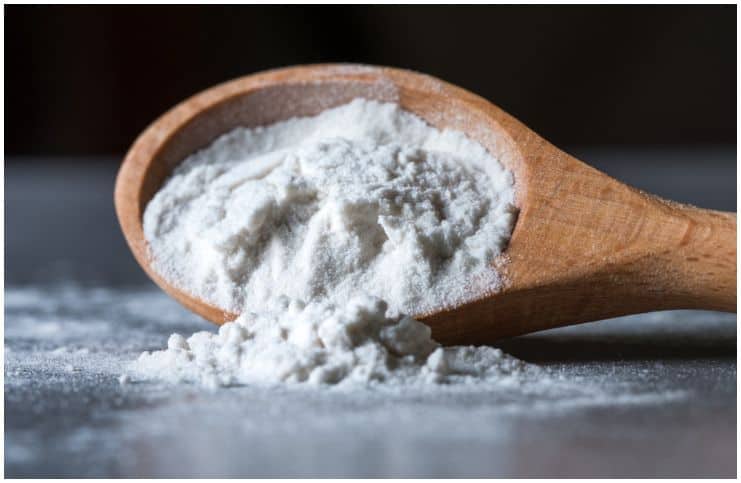The Side Effects of Sodium Nitrite – E250:
Sodium nitrite is an inorganic substance with the chemical formula NaNO2. It is a white to slightly yellowish crystalline powder that is very soluble in water and also hygroscopic (the ability of a substance to attract and hold water molecules). It has the E number E250.
Nitrites are precursors of carcinogenic substances – nitrosamines, which are formed in the stomach from proteins and nitrites, and accelerate the formation and growth of cancer cells throughout the body. High concentrations may react with hemoglobin.
Uses
It is the ingredient that gives a product like ham its taste and color. Without it, these products’ shelf life would be shortened considerably.
Almost all processed meats are made with this compound: hot dogs, breakfast sausage, lunch meat, bacon, and meats in canned soup products.
It is also used in medicine, as an intestinal relaxant, vasodilator, bronchodilator, and as an antidote to cyanide poisoning and hydrogen sulfide poisoning.
E250 is used:
- in the manufacture of rubber chemicals;
- in metal coatings for detinning and phosphatizing;
- as a corrosion inhibitor;
- as a laboratory reagent;
- in photography;
- in printing and dyeing textile fabrics;
- in manufacturing diazo dyes.
The use of E250 is banned in Sweden, Norway, Canada, and Germany.
Hazards & Side Effects of Sodium Nitrite in Food
Cancer
Cancer is one of the main causes of mortality and morbidity worldwide, with about 14 million new cases every year. Worldwide, every year over 10 million death are due to cancer.
A preeminent concern about E250 is the formation of carcinogenic nitrosamines in meats containing it when meat is overcooked or charred. Such carcinogenic substances can also be formed from the reaction of nitrite with secondary amines in the human stomach, and also during the curing process used to preserve meats.
A study by the University of Southern California and the Cancer Research Center of Hawaii suggests a connection between eating processed meats and the risk of cancer. The study followed 190,545 people (approximately 45 percent of the study participants were men), aged 45-75, for 7 years.
At the beginning of the study, all participants completed a self-administered comprehensive questionnaire that included a detailed dietary assessment, as well as sections on demographic factors, height and body weight, lifestyle factors other than diet, including smoking history, history of previous medical conditions, including diabetes mellitus and familial history of cancer.
They concluded that people who ate the most processed meats had a 67 percent higher risk of pancreatic cancer than those who ate the least amount. Also, among the study participants included in the analysis, 482 developed incident exocrine pancreatic cancer during the 7 years of follow-up.
Further, the results raise the possibility that individuals might reduce their risk of pancreatic cancer by lowering the consumption of processed and red meat.
Heart Disease & Type 2 Diabetes Mellitus
Every year, close to 525,000 people in the United States have their 1st heart attack. Moreover, 210,000 who have already experienced a heart attack have another.
According to a recent study, eating too much-processed meats to diabetes and heart disease. Interestingly enough, the researchers did not find that consuming unprocessed meat at the same rate led to nearly the same risk.
What’s the difference between the meats that contain comparable amounts of saturated fat and bad cholesterol (LDL)? The processed meats had four times the amount of sodium and 50% more E250.
Pregnancy
E250 has been formally assigned to pregnancy category C by the FDA. This substance has caused fetal death in humans as well as animals. There are no controlled data on human pregnancy.
In addition, it is not allowed in products intended for children under six months. Little children have a different type of hemoglobin, which is much more reactive toward nitrites than normal hemoglobin.
Migraines
The consumption of E250 has also been associated with the triggering of migraines in individuals who already suffer from them. This condition is an extraordinarily prevalent neurological disease, affecting 1 billion worldwide and 38 million Americans.
Interestingly, it affects three times as many women as men, the main reason for this higher rate being most likely hormonally driven.
The main symptom of a migraine is an intense headache on one side of the head. Other symptoms include:
- increased sensitivity to sound and light;
- vomiting;
- nausea.
Vegetables & Nitrates
A 2008 report by the European Food Safety Authority states that there is no reported risk of eating high amounts of nitrates in vegetables.
Higher levels of nitrate tend to be found in leaves, whereas lower levels are found in seeds or tubers. Thus, leaf crops such as lettuce and spinach usually have higher nitrate concentrations.
Even so, the health benefits of eating those vegetables far outweigh the risks. The nitrates in those vegetables don’t have the same effect on our bodies as the ones that are artificially added to meats because these veggies also contain vitamins E and C, which inhibit the formation of those N-nitroso compounds.
READ THIS NEXT
Chlorine Dioxide – Side Effects
Sodium Benzoate (E211) – Side Effects
Acacia Gum (Gum Arabic) – Side Effects
Theobromine Poisoning Side Effects & Theobromine vs Caffeine
References https://www.ncbi.nlm.nih.gov/pubmed/12563346 https://efsa.onlinelibrary.wiley.com/doi/full/10.2903/j.efsa.2017.478

“Use of E250 is banned in Sweden, Norway, Canada, and Germany.”
Not true, in Norway at least. All processed meats have E250 mentioned on their labels.
I have bought processed Turkey from Poland/Germany in Sweden……with E250 in ingredients!!!!!!!!
Its unfortunally not correct that E250 are banned here in Norway.
It is not banned in Sweden either.